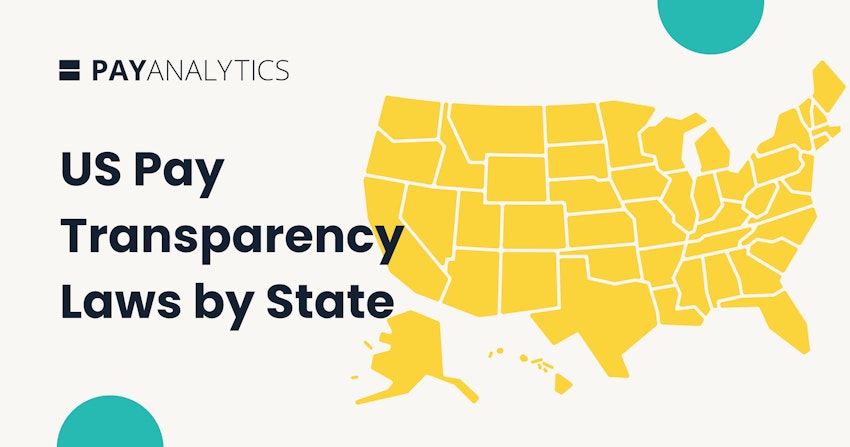Workplace equity part 1: What we’ll cover in this article

In the first part of this two-part article series, we'll cover the ‘what’, while in the second part we'll focus on how/why DEI efforts can be ineffective in the short and long term.
- What a well-structured diversity, equity, and inclusion (DEI) effort can address;
- What causes workplace inequality;
- How and why organizations have tried to move towards greater equity; and
- How DEI efforts can fall short.
In that final installment, part 2 of this series, we'll provide some suggestions on what steps you can take to become a workplace that’s sustainably diverse in practice, too.
How has the diversity conversation been going?
Workplace equity is a concept that has evolved in recent decades—and this evolution is largely driven by a growing understanding that gender-based pay discrimination has some very deep roots.
In some cases, an organization’s gender-based pay inequality (or inequality based on ethnicity, nationality, and other protected characteristics) can be based on simple apples-to-apples pay disparities. In other words, within a group of employees doing work of comparable value to the organization, some might be underpaid based only on their gender, race, nationality, etc.
However, we now know that inequality is often not driven by these simple, superficial differences, but by broader, underlying disparities. For instance, members of demographic minority groups may have less access to opportunities for higher paying jobs, managerial positions, and executive roles—or they may lack the support or financial resources they need to access those opportunities. So while establishing pay equality is crucial, often pay equality is simply not enough to tackle the root causes of pay disparity. And this is where the bigger concept of workplace equity comes in.
Key terms: The umbrella of diversity, equity, and inclusion
If you’re ready for the more advanced course, skip ahead. If you’re already prepared to talk to PayAnalytics about how you can kick off your pay equity efforts in 2024, drop us a line.
Let’s start with some basic definitions. Today, the general consensus is that workplace equity entails fair pay and pay equity, opportunities for growth and advancement, and equitable access to resources and critical benefits regardless of an employee’s demographic characteristics (like race, cognitive style, gender, age, ability).
Employers’ efforts to improve workplace equity are usually discussed under the umbrella of diversity, equity, and inclusion (DEI) efforts. A breakdown of the acronym gives us a good picture of what DEI addresses.
The D (diversity) in DEI seeks to answer questions such as:
- Are employees of all backgrounds equally represented throughout the organization, across departments and job functions, and at all levels of seniority, responsibility, and salary levels?
- Are all demographic groups represented among new hires across job roles and salary levels?
- Is there bias in the annual raise and promotion process?
The E (equity) in DEI seeks to answer questions like:
- Is the salary structure internally fair, or are there demographic pay gaps?
- Is performance assessed consistently and without bias?
The I (inclusion) in DEI asks us to examine questions like:
- Do all employees feel equally valued and accepted in the organization?
- Does the workplace accommodate employees’ diverse needs?
Workplace equity encompasses a broader focus on hiring, retention, and promotion
In DEI, then, we broaden our focus from pay equity analysis to larger issues of hiring, retention, and promotion throughout the entire organization. We focus on eliminating systemic opportunity and resource disparities based on invalid factors (like demographic characteristics). Pursuing workplace equity is not only about correcting these differences, but also about overcoming historical, persistent, and harmful practices and unconscious biases. And it ends up creating what can be described as a “whole person workplace.”
Just as you do not expect a medical practitioner to make a diagnosis based on symptoms alone without taking your person and personal context into account, you should also not expect DEI efforts to rest solely on partial efforts that take into account only one or two aspects of employee well-being and livelihood.
A well-structured DEI strategy can help address the workplace disadvantage of minority groups within your organization. And the actions of one company can make a contribution to dismantling society-wide labor market disadvantages.
That’s no simple task. And as we work through it, we’ll guide you through the what, why, and how of DEI efforts past and present to give you a framework for thinking about, communicating, and making a business case for true equality at your organization.
A brief history of workplace “diversity”: From legality and ethics to productivity and well-being

If you’re ready for the more advanced course, skip ahead. If you’re already prepared to talk to PayAnalytics, drop us a line.
In many nations, awareness of workplace inequality and the need for change was part of the broader push for legally protected civil rights in the mid-twentieth century. Efforts to combat workplace discrimination were framed in terms of legal and ethical rightness.
Around the 1990s, “diversity” became a catchall term; it was framed as the solution to inequalities in both pay and opportunity—including those we mentioned in our article on workplace disadvantages and labor market disadvantages (see “Fundamentals of Pay Gap Calculations: Part 2).
There’s a commonsense logic to this: if demographic majority groups (male, white, heterosexual, non-immigrant) are over-represented within the organization, the solution is simply to hire more people of demographic minority groups. This is a good impulse, but for reasons we’ll go into in greater detail in the next section, just “adding more diversity” in hiring often fails to go far enough.
At around the same time, researchers were seeing that organizations that had increased their diversity were seeing real benefits. So they began to make the business case for diversity. This has become the main argument for more open and inclusive workplaces: that they’re also more productive. Because a more diverse workplace will have a greater breadth of employee experiences, points of view, and problem-solving approaches, it’s also stronger, and this can lead to better financial performance.
One driver of this dynamic is public perception: if an organization is seen as ethical and inclusive or unethical and exclusive, this can enhance or detract from business growth. For this reason, investors are increasingly homing in on Corporate Social Responsibility as an important metric in their decision-making. And the business case makes it possible for organizations to think about their DEI initiatives in terms of ROI (skip ahead to learn about the ROI of DEI), framing changes in HR practices as an investment.
How unconscious bias plays out in the workplace
Even in cases where people and organizations are well-intentioned and there is no obvious discrimination or prejudice, inequity—in the workplace and elsewhere—has its roots in overt and unconscious biases. Unconscious bias is usually defined as widespread, culturally-based stereotypes about certain groups that we, as individual people, internalize without necessarily intending to. Let’s look at a few examples of how unconscious bias gives rise to inequity in the workplace.
What does unconscious bias look like in the real world?
One example is a new hire decision.
The hiring manager is white, non-immigrant, and male. He needs to add a program manager to his team of software developers; two candidates applied to the position, both internal. One is a Latinx, immigrant woman with five years of experience in program management and a four-year college degree in Project Management. One is a white, non-immigrant man with the same experience and education.
Without being able to explain exactly why he feels the way he does, the hiring manager might choose the white male candidate based on a gut-level impression. The hiring manager feels that the Latinx candidate just wouldn’t “fit in” with the white, predominately male team as well as the white, non-immigrant male candidate would.
Let’s break down what happened in this scenario.
The hiring manager, in this case, is acclimated to bringing on and entrusting people who look like him with greater responsibility. If the hiring manager does not examine his unconscious bias and the company does not have infrastructure in place to monitor biased behaviors and practices, he might be reluctant to hire a well-qualified female candidate.

Another example we’ve come across:
A Japanese sales representative is a top-performer at a Sydney-based company, but he is only assigned to Japanese (or Japanese-speaking) clients. Despite his excellence, he has been segregated from the predominantly English-speaking Australian market. In this case, his company may be operating on the assumption that this sales representative’s primary value is knowledge of his culture of origin and his mother tongue (Japanese) rather than his excellence at sales. This limiting perspective is harmful to workplace equity efforts and generating new business.
The reverse is also true: Anglophone employees based in the U.K. can offer value to other branch offices (in Germany, for example) through collaboration, exchanges of best practices, and even by joining the German team.
The overlooked value of talented workers.
In the examples above, the Latinx candidate may contribute foundational ideas that reshape company culture to create lasting change. She might introduce process improvements to make the development team more efficient, guided by her experiences. Or the Japanese representative may open his team up to new, perhaps less visible, prospects that are an excellent fit for his company’s offering.
Good intentions gone awry: Why DEI efforts sometimes fail
It’s possible for organizations to put a fair amount of effort into DEI, yet still have it fall short of their expectations. Perhaps the demographics in the organization change, but employees still feel unsupported, retention among demographic minority groups is low, and the business case benefits aren’t appearing. Every organization’s context is different, but here are some common reasons we’ve seen.
1️⃣ Diversity and inclusion strategies don’t go far enough.
A closer look at workplace culture may reveal “missing links” in diversity and inclusion strategies—these may take the form of incomplete efforts and initiatives to address systemic, often unconscious, biases at both the individual and the cultural level.
2️⃣ Thinking of workplace equity as “one giant leap”
Taking on too much at one time is difficult for everyone, even at the best of times. Transforming a workplace, particularly at an organization with long-established systems and a culture that runs deep, takes clarity of thought and vision—and time. Depending on an employer’s particular characteristics, a major mindset shift may be needed.
3️⃣ Overthinking ROI—or a lack of clarity about motivation
We’ve talked about how the business case made it easier for organizations to think about DEI in terms of ROI: of workplace equity as an investment that will yield benefits.
However, an organization that is too reliant on the idea of DEI as an investment runs a big risk of tokenizing employees in minority groups. Diversity efforts that are lackluster, left unfulfilled, or carried out “for the wrong reasons” can end up alienating and overlooking the minority groups they are intended to serve.
4️⃣ Trusting too much in “just add diversity”
As we mentioned earlier, “more diversity” isn’t a bad impulse, but if increasing hiring diversity is the only solution, its effectiveness is often limited. These employees may be placed at the wrong level of the organization, which causes a vertical representational imbalance, or their ideas may not be heard and taken as seriously as their majority colleagues.
5️⃣ DEI is a reactive response, not a proactive effort
Sometimes organizations implement DEI initiatives in response to major or forced shifts or crises. It’s common for crisis-response efforts to remain superficial. They often lack the diligence and openness necessary for decision-makers to really understand the experiences and needs of minority groups.
6️⃣ Lack of accountability
Perhaps an employer sets up a way for employees to voice their concerns about equity—but it’s never clear who will listen to those concerns and what action they’ll take. If the company’s leadership has no accountability to the DEI process, employees will sense that they are not the real priority in the organization.
Now that you’ve learned the pitfalls, let’s learn about the possibilities.
In this article, we examined the basic history of diversity in the workplace, employers’ motivations for pursuing a DEI strategy, and some of the pitfalls of these efforts. We've gone through a number of factors that could undermine DEI efforts in your organization. In the next and final installment of this series, we'll take a closer look at DEI done well and how to roll out a DEI program that is effective, efficient, and ethical. So bookmark this page and keep a lookout in our Newsroom for that one.
In the meantime, please reach out to us if you have any questions—booking a 1:1 with a pay equity specialist can be just the thing to begin the new year right.
If you’re looking for more information to get your creativity brewing…
If you’re looking for more information before you jump to the next post, check out these related resources:
📖 Our resource library of local legislation





